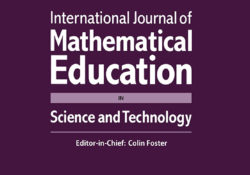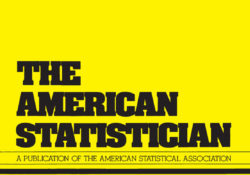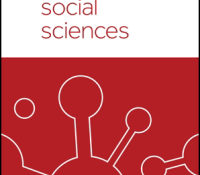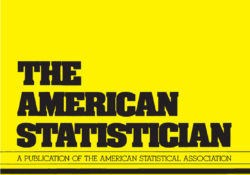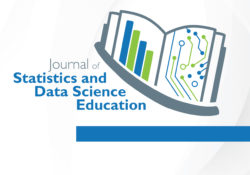tandfonline.com har udgivet en rapport under søgningen “Teacher Education Mathematics”: Abstract The purpose of this study was to examine the current state of integrated science, technology, engineering, arts, and mathematics (STEAM) education. We conducted an extensive review of the literature, followed by document analysis to construct concepts and themes associated with prospects, priorities, processes, and problems of STEAM education. The analysis of STEAM learning concepts from the literature provided three sub-constructs under the prospects – STEAM movement, the purpose of STEAM education, and benefits of STEAM education. The sub-constructs under priorities of STEAM education were – curriculum integration in STEAM and STEAM education as a curriculum reform. The sub-constructs of STEAM education as a process were – the pedagogical process and assessment in STEAM education. The sub-constructs of the problems in… Continue Reading →
Like this:
Like Loading...
tandfonline.com har udgivet en rapport under søgningen “Teacher Education Mathematics”: Link til kilde
Like this:
Like Loading...
tandfonline.com har udgivet en rapport under søgningen “Teacher Education Mathematics”: Abstract Abstract School leadership plays a fundamental role in promoting educational outcomes. The success of every school rests squarely on the shoulders of its leader, namely the principal. The main objectives of this study were firstly to examine the allegations surrounding the recruitment processes of principals in South African schools, particularly the selling of posts, further, this study also explored the different functions of role players in these processes and finally, the challenges faced in the recruitment and appointment of principals processes. Using the final report the department of Basic Education (DBE) of 2016 on the investigation of the selling of posts, chapter two of the South African Bill of Rights on equality and fairness and drawing from Rawls theory… Continue Reading →
Like this:
Like Loading...
tandfonline.com har udgivet en rapport under søgningen “Teacher Education Mathematics”: ABSTRACT ABSTRACT This article reports results of an ethnographic study of how girls are positioned, and position themselves, in relation to gender regimes in three vocational programmes in Swedish upper secondary education: Restaurant Management & Food, Health & Social Care, and Vehicle & Transport. The comparison shows that there are different possible feminine positions where the girls resist and comply to varying degrees both within and between the programmes, with expectations interrelated with discourses of consumption, caring and production. However, generally the position of emphasised femininity is most prominent and becoming a female worker in the programmes’ settings involves complying with feminine ideals of a caring discourse, regardless of whether the VET is oriented towards education for masculine production work,… Continue Reading →
Like this:
Like Loading...
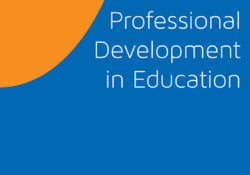
tandfonline.com har udgivet en rapport under søgningen “Teacher Education Mathematics”: ABSTRACT ABSTRACT To better align teacher learning with teachers’ learning needs, teachers’ sense-making of an innovation during which teachers experimented with differentiated instruction was studied during two school years. Using answers to a questionnaire, 15 teachers’ sense-making processes were characterised by three types of search for meaning: assimilation, adaptation, and toleration. We further specified the teachers’ sense-making through their experienced sources of ambiguity and uncertainty (limited resources and conflicting goals) and a detailed description of their personal frames of reference. We concluded that the teachers varied in their types of search for meaning during both school years, though most teachers were found to use assimilation in the second school year. Their experienced sources of ambiguity and uncertainty and their personal… Continue Reading →
Like this:
Like Loading...
tandfonline.com har udgivet en rapport under søgningen “Teacher Education Mathematics”: Link til kilde
Like this:
Like Loading...
eric.ed.gov har udgivet: Problem Statement: Science, technology, engineering and mathematics (STEM) education aims at improving students’ knowledge and skills in science and math, and thus their attitudes and career choices in these areas. The ultimate goal in STEM education is to create scientifically literate individuals who can survive in the global economy. The identification of new learning outcomes, curriculum programs, and teaching practices needs to be clarified by the STEM education community. Media design processes are a potential teaching method in STEM education that requires learners to design digital media artifacts using a variety of technological tools. Purpose of the Study: This study investigates the impact of science, technology, engineering, and mathematics (STEM) integrated media design processes on 8th grade students’ attitudes toward science and technology classes, as well as… Continue Reading →
Like this:
Like Loading...
tandfonline.com har udgivet en rapport under søgningen “Teacher Education Mathematics”: ABSTRACT ABSTRACT Finding ways to enhance introductory students’ understanding of probability ideas and theory is a goal of many first-year probability courses. In this article, we explore the potential of a prototype tool for Markov processes using dynamic visualizations to develop in students a deeper understanding of the equilibrium and hitting times distributions. From the literature and interviews with practitioners, we identified core probability concepts, problematic areas, and possible solutions from which we developed design principles for the tool and accompanying tasks. The tool and tasks were piloted on six introductory probability students using a two-person protocol. The main findings highlight that our tool and tasks seemed to assist students to engage with probability ideas, to develop some intuition for… Continue Reading →
Like this:
Like Loading...
